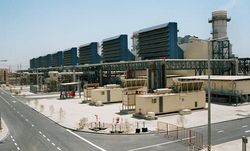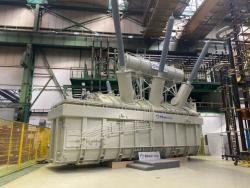
OR WAIT null SECS
© 2024 MJH Life Sciences™ and Turbomachinery Magazine. All rights reserved.
Selecting the correct barrier, buffer fluid
Selecting the correct barrier or buffer fluid is a critical step in specifying a sealing system. It is easy to consider a barrier or buffer fluid only in terms of its lubricating properties; however, the fluid serves a number of other functions and must possess certain characteristics for successful use in mechanical seals. Each of these topics has specific considerations which should be addressed prior to the final selection.
Below are excerpts from a paper, "Barrier and buffer fluid selection and considerations for mechanical seals," by Michael Huebner of Flowserve Corporation at the 2016 Turbomachinery Symposium.
Have adequate properties for lubrication of the seal faces
Mechanical seals operate with a thin liquid film between the faces. The fluid must have properties which allow the faces to operate under the application conditions and provide adequate lubrication. This is a function of the lubricity of the fluid, the viscosity under operating conditions, and the presence of additives or other contamination. The barrier or buffer fluid must also provide good lubrication for the specific face material combination in the application.
Standard seal OEM pumping devices (or pumping rings) have proven to provide adequate circulation in fluids with low viscosities. When using high viscosity barrier fluids, though, the reduction in head and the increase in pipe friction may reduce the flow rate to the point where the seal’s performance is compromised. The barrier fluid needs to be evaluated not only at operating temperatures but also under start-up or stand-by conditions. This is especially important in areas where the seal reservoir may be exposed to very cold ambient conditions.
Have a viscosity which is low enough to minimize heat generation in high speed applications
Seals generate heat due to the effective coefficient of friction (including fluid shear) between the faces and by turbulent heat generated by the rotating seal components. On moderate sized seals operating at synchronous speeds, this heat generation is easily controlled by standard piping plans. On larger seals operating at high speeds, high viscosity barrier or buffer fluids may generate significant heat input resulting in excessive thermal distortion of the faces, high barrier fluid temperatures, and degradation of the barrier fluid.
Have a viscosity which is low enough to prevent blistering of a carbon seal face
When carbon is used in high viscosity fluids, the shear forces between the seal faces may damage or blister the carbon resulting in excessive leakage. To prevent blistering, the viscosity of the barrier fluid must be low (generally less than 20 cP) or the seal face materials may need to be changed to hard vs. hard combination.
Be stable and not flash, degrade, or solidify under operating temperatures
Any liquid will have changes in its fluid properties as a function of its temperature. A barrier or buffer fluid may have suitable fluid properties under ambient conditions but have changes in properties under operating conditions which make it unsuitable for a specific application conditions. This requires that the user examine the expected temperatures of the barrier or buffer fluid at not only the extremes of the operating conditions but also the extremes of stand-by, cleaning, or other conditions that the fluid may be exposed to.
Be environmentally safe and not create health or safety issues
Barrier and buffer fluids must be considered in terms of their effect on personnel safety and environmental conditions. Before selecting a fluid, the user should consider the effects of personnel exposure during commissioning, seal failure, and equipment maintenance. Barrier or buffer fluids may also leak to atmosphere and this leakage should not violate any environmental regulations or permitting requirements. The selected barrier or buffer fluid should help mitigate the hazards of process leakage without introducing new concerns for the operator.
Be compatible with the process fluid
Both barrier and buffer fluids will mix with the process fluid. This mixing must not cause an adverse chemical reaction or negatively impact pump performance.
Be acceptable for leakage into the process fluid
In a Plan 53 or Plan 54 system, barrier fluid will be introduced into the process stream. In normal operation, inner seal leakage will be very low. In the case of seal failure, considerably more barrier fluid may enter the process.
Be compatible with materials of construction of the pump, seal, and seal support system
In general, barrier fluids are not chemically aggressively towards materials commonly used in mechanical seals or seal system components. The user however needs to check the chemical compatibility of all components including gaskets and secondary sealing elements with the barrier fluid under operating conditions.



